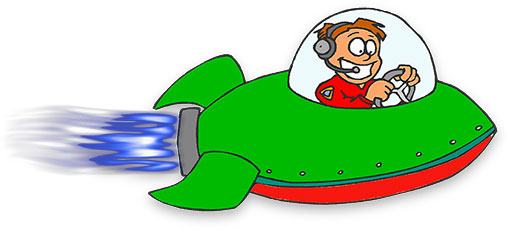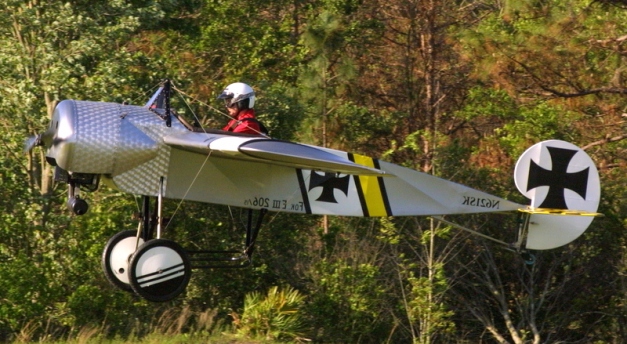 When customers ask me about the Foxbat, the question I hear most is not ‘How fast?’, ‘How far?’ or ‘How much?’ but ‘What makes your Foxbat better than any other (or sometimes a specific) recreational/light sport aircraft?’ While I understand the reason for asking the question, it’s a bit like asking which is better: a pick-up/ute, a sports car or a sedan.
When customers ask me about the Foxbat, the question I hear most is not ‘How fast?’, ‘How far?’ or ‘How much?’ but ‘What makes your Foxbat better than any other (or sometimes a specific) recreational/light sport aircraft?’ While I understand the reason for asking the question, it’s a bit like asking which is better: a pick-up/ute, a sports car or a sedan.
When I learned to fly – all those years ago – an aeroplane was pretty much an aeroplane – two wings (even back then, biplanes were often antiques), an engine at the front (anywhere else was considered a bit weird), and two seats, unless you were very very rich and could afford four. The Cessna 150 was the two seater of choice and the Cessna 172 the 4-seat family sedan of the air. And their Piper equivalents. There were specialist aerobatic aircraft and crop spraying aircraft but mostly the rest were all in much the same boat. If you don’t mind me mixing my mediums.
Over the intervening years, ultralights and light sport aircraft have come along and diversified the market beyond all expectation. I remember when you could get just plain salted, cheese & onion, or salt & vinegar crisps (chips to our USA friends). Now look at the amazing choice available. Same goes for yoghurt. Same goes for aeroplanes….
So what’s the ‘best’ aeroplane for you?
 Many people just want an aircraft to fly for leisure – mostly at weekends, sometimes on summer mornings/evenings and very occasionally for a longer trip to a fly-in or some similar event. They want something that’s at least pleasant, even beautiful, to their eyes and fits their wallet. A lot of first-time buyers are relatively low-time pilots, so the handling characteristics and feel of the aircraft are often less important to them than looks, cruise speed or comfort. Or, occasionally, short take off and landing performance. Realistically, their choice is perhaps the simplest – does it look good (to them) and can they afford it?
Many people just want an aircraft to fly for leisure – mostly at weekends, sometimes on summer mornings/evenings and very occasionally for a longer trip to a fly-in or some similar event. They want something that’s at least pleasant, even beautiful, to their eyes and fits their wallet. A lot of first-time buyers are relatively low-time pilots, so the handling characteristics and feel of the aircraft are often less important to them than looks, cruise speed or comfort. Or, occasionally, short take off and landing performance. Realistically, their choice is perhaps the simplest – does it look good (to them) and can they afford it?
It’s when you start selecting essential qualities that the decision becomes more difficult.
 For example – a farmer/landowner wants a strong landing gear and good safe slow speed handling so they can take-off and land in small spaces on unprepared paddocks. Outright top speed is likely not a key decider. The aircraft needs to be robust and reliable, because it’s going to be used a lot, and down-time is potentially lost money. And it probably needs to be easy and safe to fly near to the ground. And quick and easy to fix if it breaks down or gets broken.
For example – a farmer/landowner wants a strong landing gear and good safe slow speed handling so they can take-off and land in small spaces on unprepared paddocks. Outright top speed is likely not a key decider. The aircraft needs to be robust and reliable, because it’s going to be used a lot, and down-time is potentially lost money. And it probably needs to be easy and safe to fly near to the ground. And quick and easy to fix if it breaks down or gets broken.
These same characteristics also apply in large measure to flying school aircraft – ideally they need to be easy to fly and land, with robust landing gear. That way, the chances of an incident that results in damage are minimised. If the aircraft does get bent, they need it fixed quickly or it’s losing money rapidly, so parts availability is crucial.
 Another example: if you are a big person, you’ll need to be able to fit into the cabin – it’s a good job the Millennium Falcon had a roomy flight deck! And if you are heavy, you’ll need an aircraft that can carry you, a reasonable amount of fuel and probably a passenger. There are light sport aircraft on the market that can legally carry less than 200 kilos – that’s everything: pilot, passenger, baggage and fuel. Put two 90 kilo people on board, no bags, and that leaves you 20 kilos for fuel – about 28 litres, which will last about 75 minutes.
Another example: if you are a big person, you’ll need to be able to fit into the cabin – it’s a good job the Millennium Falcon had a roomy flight deck! And if you are heavy, you’ll need an aircraft that can carry you, a reasonable amount of fuel and probably a passenger. There are light sport aircraft on the market that can legally carry less than 200 kilos – that’s everything: pilot, passenger, baggage and fuel. Put two 90 kilo people on board, no bags, and that leaves you 20 kilos for fuel – about 28 litres, which will last about 75 minutes.
 Then there are the speed freaks – as long as they can say it goes faster than yours, it’s the one for them. But to go fast in an aeroplane demands compromises – smaller cabins, so there’s less drag; landings are potentially faster, longer and trickier; and the airframe has to be stronger (read: heavier) to cope with rough air at higher speeds…reducing the load carrying capacity. As one famous old American flying ace commented: ‘Unless you’re going at least 50% faster than the others, after a very short time you won’t notice any difference’. And next month someone else will buy one just a bit faster.
Then there are the speed freaks – as long as they can say it goes faster than yours, it’s the one for them. But to go fast in an aeroplane demands compromises – smaller cabins, so there’s less drag; landings are potentially faster, longer and trickier; and the airframe has to be stronger (read: heavier) to cope with rough air at higher speeds…reducing the load carrying capacity. As one famous old American flying ace commented: ‘Unless you’re going at least 50% faster than the others, after a very short time you won’t notice any difference’. And next month someone else will buy one just a bit faster.
By now, you’re probably starting to realise (if you hadn’t already) that all aircraft are a compromise and are designed according to a set of requirements decided by the manufacturer. As with all types of vehicle, there’s no such thing as ‘all things to all people’.
 So an important thing to think about, when deciding which aircraft, is what’s best for you – and be realistic! How often will you really fly it? Will you usually take a passenger with you or fly alone? How far will you really go on a typical flight? Are you really going to fly round Australia in it, one day? Will the aircraft really carry the weight you need it to? Why is speed important? Is getting there 10 minutes quicker, probably using more fuel, really that important?
So an important thing to think about, when deciding which aircraft, is what’s best for you – and be realistic! How often will you really fly it? Will you usually take a passenger with you or fly alone? How far will you really go on a typical flight? Are you really going to fly round Australia in it, one day? Will the aircraft really carry the weight you need it to? Why is speed important? Is getting there 10 minutes quicker, probably using more fuel, really that important?
There are no simple answers. For me – and I emphasise me – the A22 Foxbat does what I want: takes off and lands slowly in short distances, has a fantastic view out, uses the ever reliable Rotax 912 engine and is safe and easy to fly. It has a big roomy cabin and legally carries a big load. It’s not the fastest flier in its class but I can live with getting there a few minutes later, which is outweighed (for me) by all the other pro’s.
